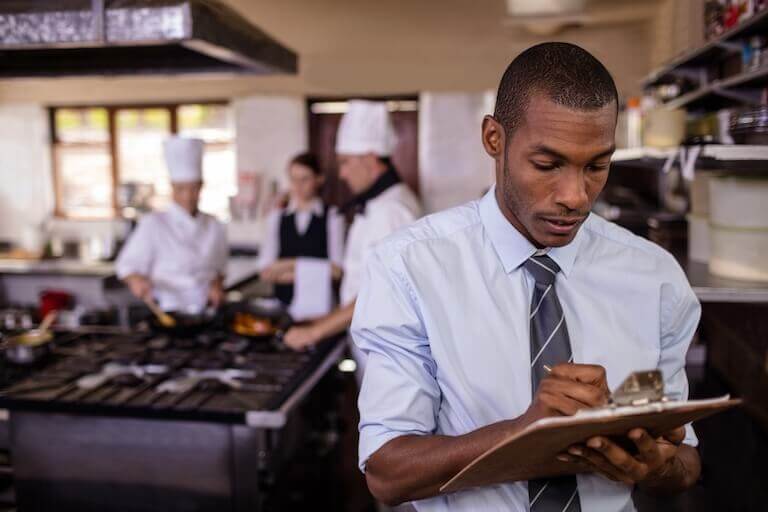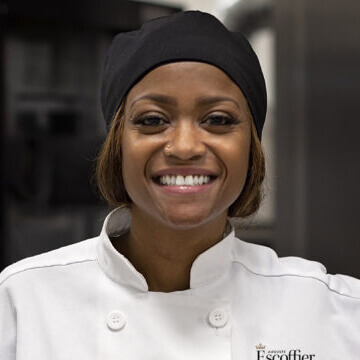You’ve honed your recipes to perfection, and people have noticed—there’s a line out the door of your restaurant and it’s almost impossible to get a table.
There’s just one problem: you’re not making any money.
If you don’t keep your restaurant’s food costs in check, this scenario could happen to you. As a restaurant owner or manager, one of your most important responsibilities is to make sure your food costs are under control. Food costs are the money you spend on food, beverages, ice, condiment packets, to-go containers—in short, everything that is used up when you sell something to a customer.
These costs are generally measured as a percentage of your restaurant’s sales. Having an accurate idea of this food cost percentage can help you understand the financial health of your restaurant and identify potential problem areas.
Fortunately, obtaining this valuable information can be pretty straightforward. Let’s take a closer look at how to calculate food cost percentage, along with some ways this information can help contribute to the success of your business.
Calculating Overall Food Cost Percentage
The purpose of the food cost percentage is to show you the ratio between how much you are spending on food and how much you take in from selling it. Calculating this percentage is one of the foundational restaurant management techniques presented as part of Escoffier’s culinary arts curriculum, which puts the business side of running a restaurant in the context of a broader culinary education.
You can obtain an accurate food cost percentage by using your existing inventory as a baseline to help figure out exactly how much product you are using over a certain period. Let’s look at the basic method, and then use it in an example to show how it works in the real world.
To get your food cost percentage using this method, you would first add the amount you spent on new purchases over a certain period—let’s say a week—to the cost of the inventory you already have in storage. You would then subtract the amount of inventory you have left at the end of the week. This tells you exactly how much product you used during that week.
You would then divide this number by your total sales during that week; multiply the answer by 100, and you have your food cost percentage. Here’s the formula for this method.
Calculating Food Cost Percentage Using Inventory
| (Initial Inventory + New Purchases – Leftover Inventory) Total Sales |
x 100 = Food Cost Percentage |
|---|
Let’s put some real numbers to this formula to help illustrate how it works. Imagine you run a pizzeria, and you have $2,000 of inventory on the shelves at the beginning of the week. Over the course of the week, you also purchase another $2,000 of product. Say you had a busy week—you rang up $10,000 in sales and wound up using most of your inventory, leaving only $1,000 on the shelves.
What would your food cost percentage be in this scenario? We can use our formula to find out.
The Food Cost Formula in Action
| ($2,000 + $2,000 – $1,000) $10,000 |
x 100 = 30% |
|---|
So this formula helped you determine that your food cost percentage was 30% for this week. Depending on your target food cost percentage (which we’ll get to in just a moment), this number would tell you whether you were on track to hit your business goals, or whether you might need to make some changes.

Calculating your food cost percentage can help you monitor your restaurant’s finances.
Calculating Per-Item Food Cost Percentage
In addition to the overall food cost percentage of your restaurant, you may want to calculate your per-item food cost percentages as well. This information would show you the food cost percentage for each individual item on your menu.
Unlike the previous formula, which measured food costs over a length of time, the formula for per-item food cost percentage simply measures the cost of everything that goes into a single menu item versus how much you charge customers for that item.
To get your per-item food cost percentage, you would simply add up the cost of every component of an item, divide that amount by that item’s price on your menu, and multiply by 100. In order to get the most accurate number, you would want to be sure to include every component of each item—down to the last gherkin, mustard packet, or straw.
The formula for per-item food cost percentage is as follows.
Calculating Per-Item Food Cost Percentage
| Total Cost of Item Menu Price |
x 100 = Per-Item Food Cost Percentage |
|---|
Let’s return to your pizzeria to see this formula in action. Say you wanted to figure out the food cost percentage of a pepperoni pizza that’s on your menu for $24. After adding up the cost of every ingredient that goes into that pizza—the pepperoni, the cheese, and every ingredient in the dough and sauce—you found that it takes $6 of product to make that pie.
We can use our new formula to determine the food cost percentage of this pizza.
The Per-Item Food Cost Formula in Action
| $6 $24 |
x 100 = 25% |
|---|
By repeating this process for every item on your menu, you can establish the food cost percentage of everything you serve.
Why Do Food Cost Percentages Matter?
Food cost percentages can be vital tools for understanding your business. They can help you track the performance of your restaurant over time and zero in on the right strategies for managing your food costs and increasing your restaurant’s profitability.
Specifically, food cost percentages can allow you to measure your actual performance against your target percentage. Your target food cost percentage tells you what your percentage should be, assuming no waste, no theft, perfect portion control, and so on.
You can obtain this target percentage by dividing what your food costs should have been for a given period by your sales for that period.
Calculating Target Food Cost Percentage
| Total Food Costs Total Sales |
x 100 = Target Food Cost Percentage |
|---|
We can use the numbers for our pepperoni pizza to illustrate this point. Say you sold 10 pizzas—at $24 each, your sales would be $240. You know that your per-item cost is $6, so your cost to produce 10 pizzas should be $60. Dividing $60 by $240 gives you a target food cost percentage of 25%.
(In reality, you would be adding together the costs and sales for every item you sold in a given period—so the target food cost percentage would depend on your overall restaurant sales. We’re just focusing on one item to keep the example simple.)
Now, say you calculate your overall food cost percentage for this same period and find that it comes out to 30%. This discrepancy tells you that you’re spending more than expected to produce each pizza. This could be because the cost of ingredients has increased, food is spoiling in storage, your chefs’ portion control is off, or any number of other issues. In this way, monitoring food cost percentages allows you to detect issues as they arise, enabling you to diagnose and resolve them—and protect your business’ bottom line.
Beyond overall food cost, you can get more specific by calculating your cost percentages for different categories—you might separate food and beverages, for example, or break a category like beverages down even further into beer, wine, liquor, and soft drinks. Using a combination of food cost percentages for different categories, along with your per-item and target food cost percentages, can help you keep tabs on your restaurant’s performance at all times.
Ready to Go Beyond Food Costs?
Food cost percentages are just one of many business principles that can help you manage your restaurant more effectively. Escoffier’s Food Entrepreneurship Program can expose you to foodservice accounting, managerial principles, and other lessons that can help promote the long-term success of your business!
Financial aid, grants, and scholarships are available to those who apply and qualify, which can help bring the opportunity to level up your management skills that much closer to becoming a reality.
CURIOUS TO LEARN MORE ABOUT RUNNING A RESTAURANT? CHECK OUT THESE ARTICLES NEXT!
- Restaurant Marketing 101: An Essential Guide
- 8 Tips for a Successful Restaurant Manager Interview
- Food Inflation: How Restaurants Can Adapt Their Menus to Rising Prices


